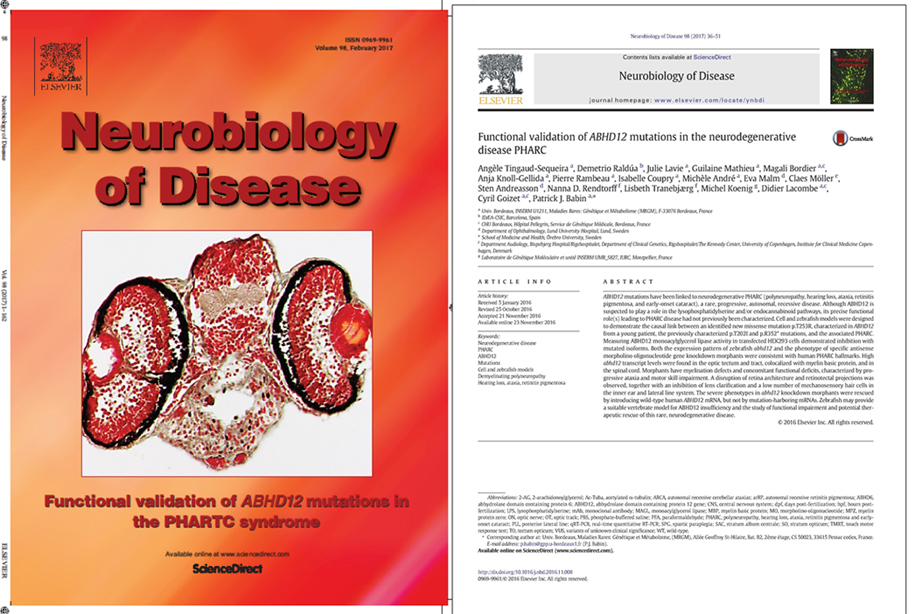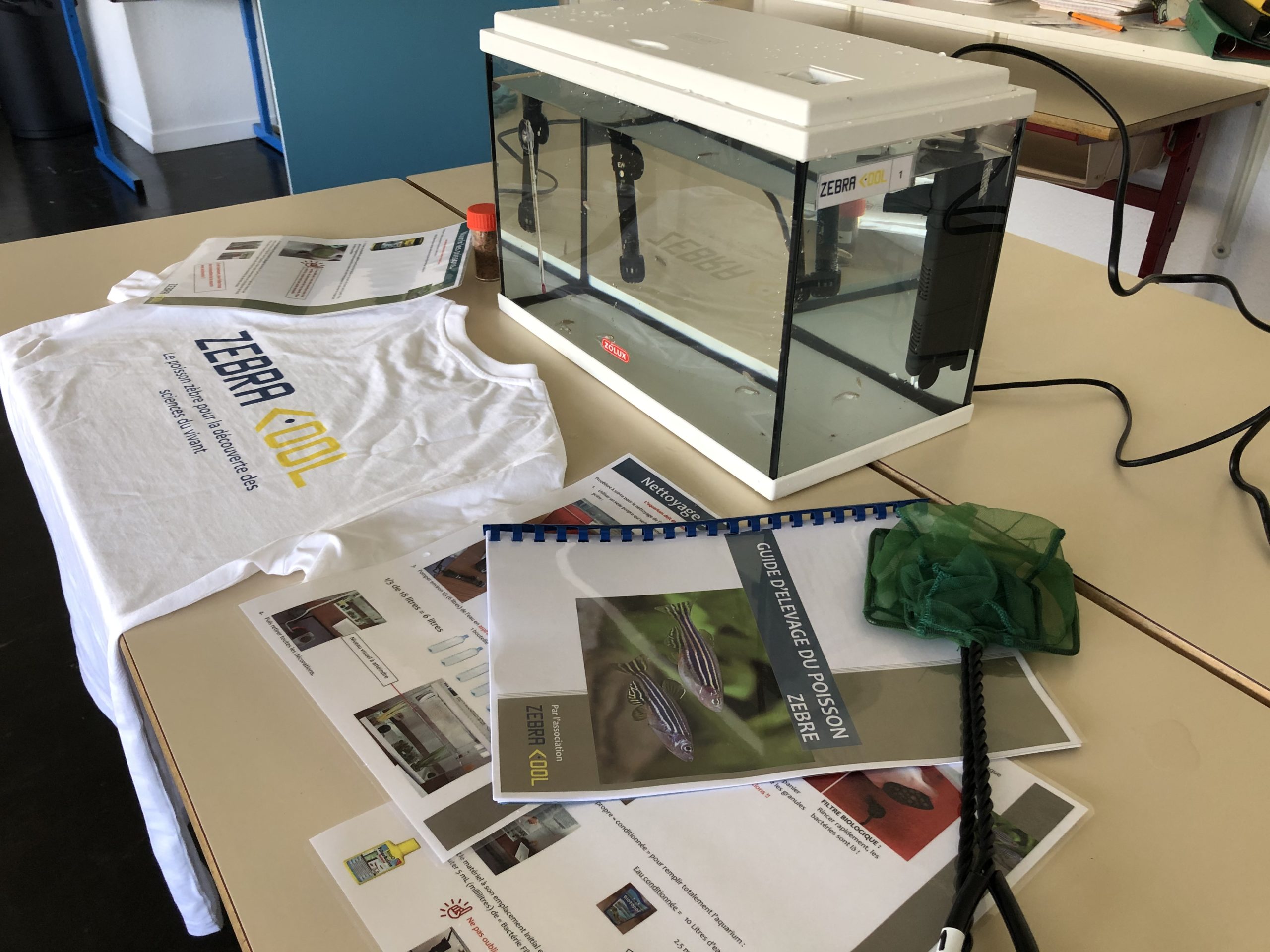
Le laboratoire MRGM, partenaire de ZebraCool, publie un nouvel article sur l’utilisation du modèle poisson zèbre pour l’étude d’une maladie rare humaine.
Functional validation of ABHD12 mutations in the neurodegenerative disease PHARC.
Tingaud-Sequeira A, Raldúa D, Lavie J, Mathieu G, Bordier M, Knoll-Gellida A, Rambeau P, Coupry I, André M, Malm E, Möller C, Andreasson S, Rendtorff ND, Tranebjærg L, Koenig M, Lacombe D, Goizet C, Babin PJ.
Neurobiology of Disease 98, 36-51, 2017.
doi: 10.1016/j.nbd.2016.11.008.
PMID: 27890673
Abstract: ABHD12 mutations have been linked to neurodegenerative PHARC (polyneuropathy, hearing loss, ataxia, retinitis pigmentosa, and early-onset cataract), a rare, progressive, autosomal, recessive disease. Although ABHD12 is suspected to play a role in the lysophosphatidylserine and/or endocannabinoid pathways, its precise functional role(s) leading to PHARC disease had not previously been characterized. Cell and zebrafish models were designed to demonstrate the causal link between an identified new missense mutation p.T253R, characterized in ABHD12 from a young patient, the previously characterized p.T202I and p.R352* mutations, and the associated PHARC. Measuring ABHD12 monoacylglycerol lipase activity in transfected HEK293 cells demonstrated inhibition with mutated isoforms. Both the expression pattern of zebrafish abhd12 and the phenotype of specific antisense morpholino oligonucleotide gene knockdown morphants were consistent with human PHARC hallmarks. High abhd12 transcript levels were found in the optic tectum and tract, colocalized with myelin basic protein, and in the spinal cord. Morphants have myelination defects and concomitant functional deficits, characterized by progressive ataxia and motor skill impairment. A disruption of retina architecture and retinotectal projections was observed, together with an inhibition of lens clarification and a low number of mechanosensory hair cells in the inner ear and lateral line system. The severe phenotypes in abhd12 knockdown morphants were rescued by introducing wild-type human ABHD12 mRNA, but not by mutation-harboring mRNAs. Zebrafish may provide a suitable vertebrate model for ABHD12 insufficiency and the study of functional impairment and potential therapeutic rescue of this rare, neurodegenerative disease.
Keywords: ABHD12; Cell and zebrafish models; Demyelinating polyneuropathy; Hearing loss, ataxia, retinitis pigmentosa; Mutations; Neurodegenerative disease; PHARC.
Article link: http://www.sciencedirect.com/science/article/pii/S0969996116302674
Contact: Pr. Patrick J. Babin, Laboratoire Maladies Rares : Génétique et Métabolisme (MRGM), Université de Bordeaux, INSERM U1211, Allée Geoffroy St-Hilaire, Bat. B2, 2ème étage, CS 50023, 33615 Pessac cedex, France. Email: patrick.babin@u-bordeaux.fr


